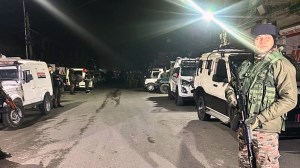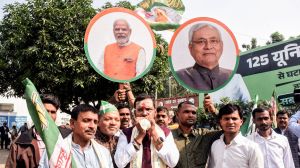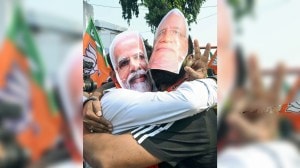Welcome to free trade zone
The seven SAARC countries on Tuesday signed a treaty that would lead to free trade and movement of goods paving the way for South Asian econ...

The seven SAARC countries on Tuesday signed a treaty that would lead to free trade and movement of goods paving the way for South Asian economic Union along the lines of EU in future. The South Asian Free Trade Area (SAFTA) framework treaty signed by Foreign ministers of India, Pakistan, Bangladesh, Nepal, Bhutan, Sri Lanka and Maldives seeks to remove trade barriers and phased elimination of tariffs and establishment of a ministerial level mechanism for administering the treaty and dispute settlement among members. The treaty will operationalise the free trade area by January 1, 2006.
The USP
• Close geographical location brings advantages and globally, multilaterlism has taken a backseat while regional cooperation is on an upswing, thanks to the collapse of WTO in two successive sessions at Seattle and Cancun.
Global trend
• NAFTA (North American Free Trade Area) — Nearly 52 pc of the exports in this region happen within NAFTA and only 48 pc to the outside world.
• European Union (EU) — 55 pc exports are to other EU countries and 45 pc outside it.
• ASEAN (Association on South East Asian Nations) — 21 pc exports from these countries are to other ASEAN countries.
• SAARC (South Asian Association for Regional Cooperation) — Only five pc exports of SAARC countries are within the region while in the rest of the world they have to face global competition.
India in Saarc
• India’s trade with SAARC countries was Rs 14,933 crore in 2002-03, only 2.71 pc of its global trade.
In simple terms
• Free movement of goods and services across the borders
• Free movement of people to work in other countries in the region.
• Common currency in the region at some stage.
• Access to cheaper goods from other markets — Pakistanis could import 30 to 40 pc cheaper Suzuki cars from India or Bangladesh IT engineers could seek better jobs in India.
• Forming joint ventures with companies in these countries.
We and WTO
• Bargaining powers of a regional group increases especially for under-developed countries like Bhutan, Nepal, Myanmar who could gain from being with larger countries like India.
• For India, it could mean even better bargaining position as it would always be a psychological leader in the region by virtue of its size and could then talk as a leader of a regional block besides being a large power.
India’s gains
• Exports of certain items could immediately go up like tea, automobiles and components, pharmaceuticals, entertainment, IT, healthcare and tourism.
• Cheaper inputs say natural gas from Bangladesh which has gas reserves but no funds for setting up large power plants.
• Freedom for Indian companies to find newer markets in these lesser developed countries rather than competing in the global world.
• Freedom to set up shop for a Haldiram or Nathu’s in countries like Pakistan through joint ventures.
• Registering official exports to countries like Pakistan directly (current level $ 750 million) rather than through third country of illegal smuggling (currently $ 2.5 billion).
But watch out
• Drag on its economic growth, thanks to the slower growing economies in the region.
• Influx of labour — skilled and unskilled — taking up employment opportunities which otherwise would have gone to Indians.
• Increase in cheaper imports, but this could be limited as the Indian economy is large enough to absorb this surge.
• Political compulsions within the region clouding investment opportunities and increasing the risk factor.


- 01
- 02
- 03
- 04
- 05





























